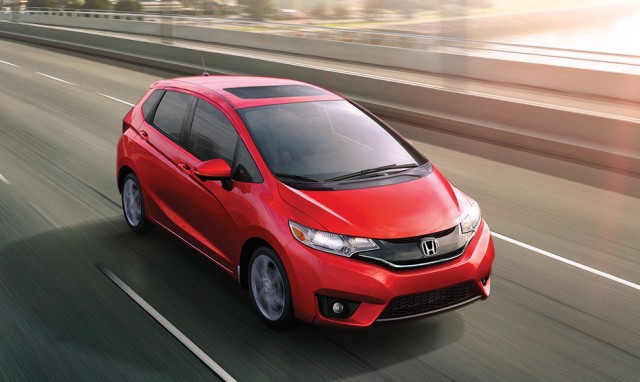Three clever new ways engineers improve 2015 Honda Fit


In the UK, they’re known as “super minis”. In North America, they’re known as “mini cars.”
But when it comes to the 2015 Honda Fit, perhaps the “super” adjective should also be associated with the car considering how company engineers have managed to redesign the all-new car with class leading levels of passenger and cargo space.
Here are three significant new ways that Honda has managed to improve the Fit.
1. Second-row “magic seats”
Perhaps it’s no surprise that the company that first introduced the disappearing “magic seat” in their Odyssey minivan has implemented it in their mini car.

Honda’s engineers have managed to design for plenty of second-row legroom and headroom (enough for a six-footer) and yet have the rear seats fold down seamlessly into the Fit’s cargo area floor. The rear seat legroom has been improved by a whopping 122 millimetres compared to its predecessor.

In order to accommodate the fold-flat seats, the fuel tank is mounted in the centre, and its profile was squished flatter while still maintaining the same capacity as before.

Although the seats cost more to engineer and build than the conventional seating in competing vehicles, they provide for extra flexibility that consumers now demand from their mini cars.
2. Lighter engine with direct-injection technology
In order to lighten the crankshaft by 27 per cent, engineers narrowed the crankshaft journals — the parts that connect the crankshaft to the engine’s connecting rods — thus increasing overall performance.

The number of counterweights has doubled, from the usual four to eight, to ensure smoothness. And when combined with Honda’s VTEC variable valve system, the horsepower count from the 1.5-litre engine has been bumped up to 130 horsepower, an improvement of 11 per cent over the outgoing car. In addition, torque has risen 7.5 per cent, peaking at 114 lb-ft.
Despite the boost in power, fuel economy is improved by 16 per cent to a best-in-class 7.0 L/100 km in the city, and 5.7 L /100 km on the highway (for the Fit LX with the CVT automatic transmission).
3. New space-efficient body structure
The new Fit is one inch shorter, but has a longer wheelbase and is marginally wider.

The new highly space-efficient body structure is paired with a completely redesigned chassis that is more rigid and weighs less. It’s also safer, designed with Honda’s next-generation Advanced Compatibility Engineering (ACE) front body structure.

ACE distributes collision energy evenly and redirects it away from the passenger compartment while at the same time minimizing damage to other impacted vehicles.

The new body structure features a remarkable 139-litre increase in passenger volume compared to the previous Fit, despite the 41 mm decrease in overall length.
The all-new 2015 Fit is now available with a manufacturer’s suggested retail price (MSRP) starting at $14,495.
All Canadian customers who purchase a 2015 Fit by October 31, 2014 are eligible for a complimentary six year / 100,000 km Honda Plus extended warranty package, valued at more than $900

